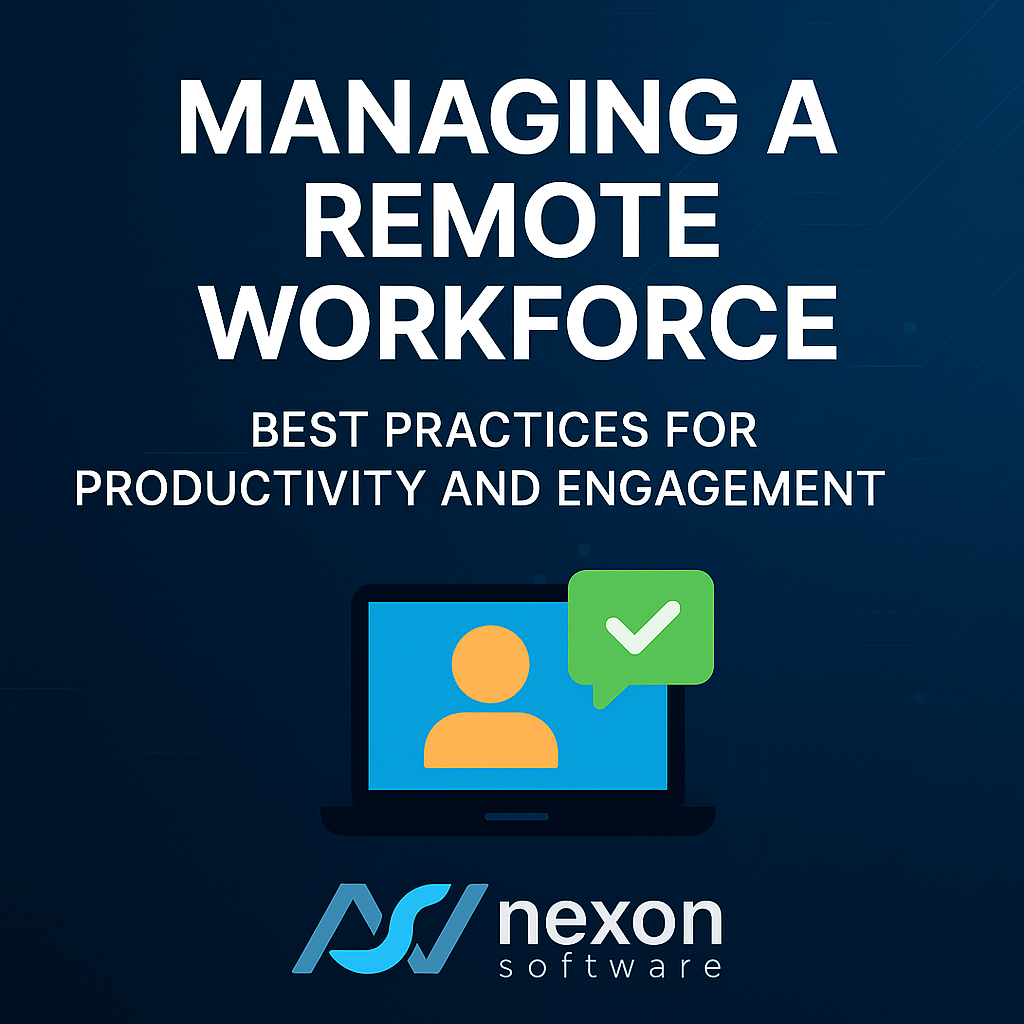Managing a Remote Workforce: Best Practices for Productivity and Engagement

Introduction
The shift to remote work is no longer a temporary response to global challenges—it’s a long-term transformation of the modern workplace. From tech startups to enterprise-level firms, businesses are embracing remote work as a viable, cost-effective, and productivity-driven model. But with this shift comes a new set of challenges: maintaining productivity, fostering engagement, and ensuring seamless communication among team members spread across various locations. To Manage a remote workforce successfully requires thoughtful planning, technology integration, and a culture built on trust and accountability.
In this blog, we’ll explore the key challenges of managing remote teams and provide best practices to ensure your virtual workforce remains engaged, efficient, and connected.
Why Remote Workforce Management Matters
A well-managed remote team can deliver results just as effectively—if not more so—than in-office teams. However, without proper management strategies, you risk decreased productivity, disengaged employees, and communication gaps.
Key Benefits of Remote Workforce Management:
- Increased Employee Retention
- Wider Access to Global Talent
- Improved Work-Life Balance
- Cost Savings on Infrastructure
Top Challenges of Remote Team Management
Before diving into solutions, let’s identify the most common roadblocks companies face:
1. Communication Breakdowns
Without daily in-person interactions, employees may feel isolated or out of the loop.
2. Productivity Tracking
Managers often struggle with measuring performance when employees work from home.
3. Maintaining Company Culture
Keeping your culture alive and consistent can be challenging without a shared physical space.
4. Security Risks
Remote setups may lead to increased cybersecurity vulnerabilities.
Best Practices for Managing a Remote Workforce
1. Set Clear Expectations and Goals
Define roles, responsibilities, and performance expectations. Use measurable goals with specific deadlines so everyone stays aligned.
Tip: Use OKRs (Objectives and Key Results) or SMART goals to track performance efficiently.
2. Foster Open Communication
Use collaboration tools like:
- Slack or Microsoft Teams for daily check-ins
- Zoom or Google Meet for weekly video calls
- Asana, Trello, or ClickUp for task management
Encourage transparency and create communication guidelines so team members know how and when to connect.
3. Prioritize Employee Engagement
Keep your team motivated with:
- Regular one-on-ones
- Virtual coffee chats
- Recognition programs
- Online team-building activities
Happy employees are more productive and loyal, even when working remotely.
4. Emphasize Flexibility
One of the greatest advantages of remote work is flexibility. Allow your team to set their own work hours where possible. Focus on output, not hours.
Bonus Tip: Create “core hours” when everyone is available for real-time collaboration.
5. Provide the Right Tools and Resources
Equip your team with high-quality tools and software:
- VPNs and firewalls for secure connections
- Time tracking tools like Hubstaff or Clockify
- Project management systems to organize workflows
Offer stipends or reimbursements for home office setup to boost comfort and productivity.
6. Reinforce Your Company Culture
Culture isn’t confined to office walls. Keep it alive through:
- Weekly all-hands meetings
- Sharing employee success stories
- Celebrating birthdays and milestones
- Promoting wellness and mental health initiatives
7. Train Managers for Remote Leadership
Remote leadership is a different skill set. Offer training in:
- Emotional intelligence
- Digital communication
- Performance management
- Conflict resolution
Leaders must model the behavior they expect from their teams.
Performance and Productivity Metrics for Remote Teams
Tracking remote productivity doesn’t mean micromanagement. Focus on outcomes, not activity.
Examples of Metrics to Track:
- Task completion rates
- Client satisfaction scores
- Time to resolution (for service roles)
- Employee engagement survey results
Use dashboards and analytics to keep your leadership informed and agile.
Ensuring Cybersecurity in Remote Work
Security breaches can be costly. Ensure your remote workforce is protected with:
- Multi-factor authentication (MFA)
- Encrypted communication platforms
- Regular cybersecurity training
- Secure device management policies
Work with your IT team to conduct regular audits and ensure compliance with data privacy laws.
Legal and Compliance Considerations
Remote work, especially cross-border, raises compliance issues. Keep in mind:
- Tax implications for remote workers in different states or countries
- Local labor laws regarding overtime, benefits, and termination
- Confidentiality agreements and NDAs
Work with legal experts to structure remote employment contracts appropriately.
Creating a Remote Onboarding Experience
First impressions matter—even remotely. Develop a seamless onboarding process with:
- Virtual orientation sessions
- Buddy systems
- Welcome kits
- Step-by-step training plans
Keep new hires engaged with regular check-ins and early integration into company culture.
Building Trust in Remote Teams
Trust is the foundation of successful remote work.
How to Build It:
- Encourage autonomy and ownership
- Avoid micromanagement
- Provide feedback regularly and constructively
- Celebrate achievements and progress
Remote workers who feel trusted are more likely to perform at their best.
Future Trends in Remote Workforce Management
Here are a few trends shaping the future of remote work:
- AI-Powered Productivity Tools: From chatbots to smart schedulers
- Hybrid Work Models: Combining the best of both remote and in-office setups
- Remote Work Laws & Regulations: Countries are introducing remote work visas and legal frameworks
- Focus on Mental Health: Wellness programs are becoming a necessity, not a luxury
Conclusion
Managing a remote workforce can unlock new levels of productivity, efficiency, and employee satisfaction—if done right. By implementing the strategies outlined above, businesses can create a remote work culture that thrives.
Don’t view remote work as a challenge—see it as an opportunity to innovate your leadership style, company culture, and operational efficiency.



